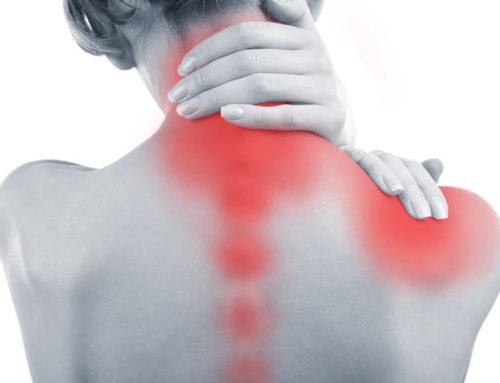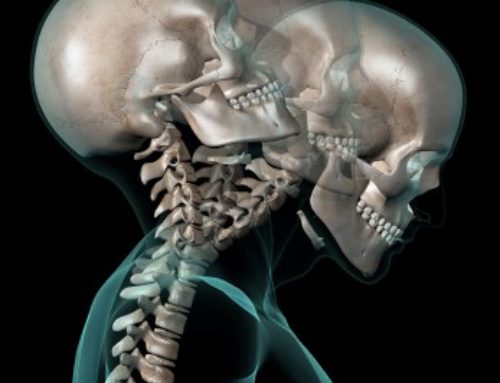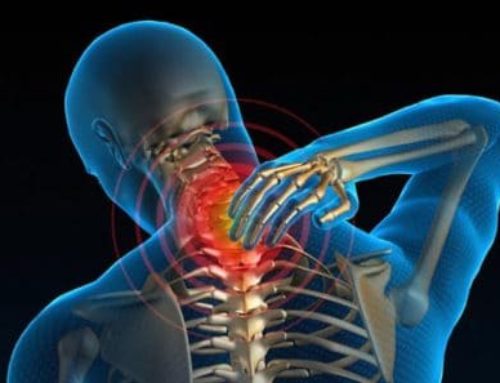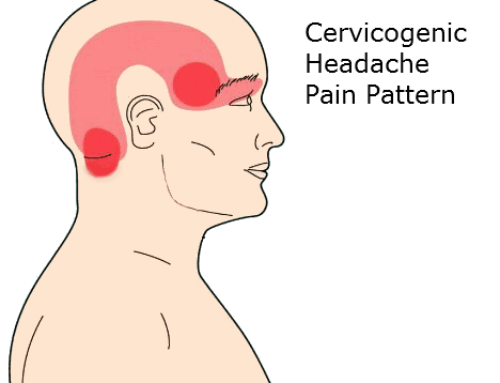Tension headaches are the most common kind of headache. In fact, it’s estimated that 50 percent of people who’ve been diagnosed with migraines actually suffer from misdiagnosed tension headaches. Unlike migraines, tension headaches are caused by musculoskeletal issues happening in your neck and are easily fixable. (To learn how to identify a migraine from a tension headache, check out our blog, “Migraines Vs. Headaches: Commonly Misdiagnosed, Dangerously Mistreated.”)
Are Tension Headaches Dangerous?
Oftentimes, migraine medication won’t work for these kinds of headaches. Even worse, by continually numbing the pain of a tension headache instead of treating the root cause, the problem could be progressively getting worse and worse and causing more and more damage in your neck.
Wait, wait, wait. Weren’t we talking about headaches? I don’t have neck pain…
What Causes Tension Headaches?
True. You may not have neck pain. And that’s exactly why it’s so important to know what kind of headache you have. Tension headaches (the most common kind of headache) are caused by musculoskeletal issues happening in your neck. (That’s right, the home of your spinal cord and brainstem–not an area you want to do damage to.) Oftentimes, problems in your neck (that could be caused by tightness and imbalances in your neck and shoulders) won’t cause neck pain. Instead your neck “refers” the pain into your head.
What is Referred Pain? Tension Headaches and Neck Pain
Referred pain just means that instead of feeling pain where the problem is, your brain registers the pain as coming from a different part of your body. Tricky, right? It’s one of the reasons neck issues are so often hidden by misdiagnosed “migraines,” and why finding effective, long-term treatment for them can be so difficult. Just like migraines, tension headaches can cause people who have them to suffer with light and sound sensitivities.
Headaches Caused by the Neck
Before we get carried away, there are actually a few different types of headaches that can arise from the neck. One is called a cervicogenic headache and the other is our aforementioned tension headache.
What Are Cervicogenic Headaches?
The cervicogenic headache is actually caused by an irritated nerve in your neck (usually the C4-C5 facet). The nerve connected to your C5 vertebra (the vertebra at the base of your neck) shares nerve fibers with a nerve that accounts for sensation in your face. This nerve is called the trigeminal nerve. This is getting jargoney, but hold on–we’ll break it down.
What Do Cervicogenic Headaches Feel Like?
The cervicogenic headache comes with facial pain, including pain in the forehead, cheek and or jaw. So in most instances, with any sort of pain in any of these areas, you’ll want to suspect that a trigeminal nerve is impacted, which means that there’s a brainstem issue or something more serious.
Headaches at The Back of The Head
A lot of the joints in the back of the neck refer pain in and around the base of the skull at the back. So a lot of times, you have tightness in the muscles that causes compression in the joints that can create pain and a headache that goes up to the back of your skull. A lot of people get this type of deep rooted headache and feel a boring ache in the back of their head.
What is a Tension Headache? Headaches Behind the Eyes
One of the other types of neck-caused headaches is a tension headache, and it’s the most common type of headache. Tension headaches are caused by tightness in the suboccipital muscle group, which overlaps the greater occipital nerve. When this nerve is pinched by those muscles, it creates a headache that goes up around the back of the skull and perhaps into the temple and/or behind the eye. These headaches can occur on one side, or on both sides simultaneously.
What Can You Do to Prevent a Tension Headache?
Most often, tension headaches are partly caused by poor desk posture. If the font on your screen is too small to see or you need glasses and sit closer to the screen than you should, your chin pushes out toward the monitor. In these positions, you’re putting strain on your neck muscles. Constantly looking down at your laptop or cell phone is another posture culprit for these brain aches.
Being in those positions uses your neck muscles, and coming out of those positions stretches them. When those muscles get stretched, they pinch on the nerve. So over time, those chronic postures contribute to those muscles getting shorter and shorter and they eventually pinch those nerves whenever you try to achieve a correct posture. It’s a rude cycle.
Can Sleeping Cause a Tension Headache?
Yes, tension headaches can also be triggered by poor sleeping positions. If you’re a back sleeper and you sleep with a pillow that’s too thick, your chin might press forward towards your chest during the night which puts a lot of tension on those muscles and nerves and causes a headache.
Headaches and Your Shoulders
The other way tension headaches can occur is because of faulty movement patterns, especially when it comes to shoulder weakness. A lot of people have a lot of weakness in their shoulders. People with shoulder weakness often start using their upper traps to lift their arms up over their head instead of using their shoulders.
These are the people who constantly feel like they carry their stress in their upper shoulders and traps area and can never get relief because they’re chronically tight in that area. What that area is trying to do is support and stabilize the neck and shoulders to make up for the weakness of the other muscles, but it’s not doing it correctly. So what ends up happening is it again compresses those joints, which can cause a cervicogenic headache, or it pinches those nerves in the occiput, which can cause the typical type of tension headache.
How to Relieve a Tension Headache
The way to get rid of tension headaches really depends on which one of those things is true. If you’re sleeping in bad positions, a new pillow may be in order. Usually though, that’s not enough to cause chronic headaches on its own. Usually, you’re also seeing that poor posture (whether while sleeping or waking) is coupled with poor movement patterns where people overuse the wrong muscles.
Thankfully, there are some easy ways to relax the tight muscles triggering the headache. First, putting pressure into the tight muscle and breathing deeply will help. To help those muscles out, activating the muscles that work against the tight muscles allows the tight muscles to relax, essentially relieving them of the responsibility to support your head so they can take a break.
If your headaches are caused by problematic movement patterns and strength and weakness issues, you actually have to look a little bit more into the shoulders and how the shoulder complex is moving or if they have a whiplash history that’s causing their muscles to stay chronically weakened or tightened. If one of those two things is present, you’re only going to be able to get short term relief from chronic tension headaches without addressing those movement pattern issues.
So often, people are led to believe that tension headaches are something that can only be resolved with medication. In fact, poor movement patterns are very fixable. Plus, fixing the movement pattern (the root cause) instead of masking the pain with medication (like a Bandaid) means finding long-term relief, not having to rely on painkillers, and getting back to living your life.
The Takeaway
Tension headaches are often caused by poor posture habits and weaknesses in the neck and shoulders that cause muscle stiffness that pinches nerves that don’t want to be pinched. The key to relieving these kinds of common headaches is twofold:
- Relax the improperly overworked muscles in your neck and shoulders by applying pressure and breathing deeply, and
- strengthen the muscles that should be doing the work and let those stiff muscles that have been carrying the team on their own have a break!
If you’re struggling to figure out which kind of headache you have, or want to reprogram your body to use correct movement patterns, a licensed physical therapist will be able to help. The Doctors of Physical Therapy are hosting an upcoming Headache and Neck Pain Workshop where the doctors will show attendees how to relieve their own and others’ tension headaches with hands-on pressure point techniques! The fun bring-a-friend event will also have Valentine’s Day themed treats and a photo booth for a guaranteed good time.
There are limited spots left! To save your seat, register online or call The Doctors of Physical Therapy at 480-482-0651.







